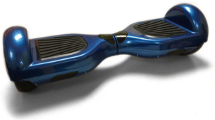Summary
One hundred and eighty-two patients presented with 200 inline-skating injuries over a 30-month period. Of these, 14 % were admitted to hospital, 10 % required operative treatment. Fractures (49 %), contusions/lacerations (27 %) and capsular/ligamentuous injuries (16 %) were the most prevalent types of injury. Children had an even higher risk of sustaining fractures (62 %). Falling on the extended arm caused 44 % of all injuries. Thirteen percent resulted from torque mechanisms of the leg, whereas direct trauma to elbow or knee (5 % each) were uncommon injury mechanisms. Injuries of the elbow, forearm, wrist and hand accounted for 55.5 % of all cases and 71 % of all fractures. Head (13 %), knee (9.5 %) and ankle (9 %) were other regions frequently involved. Protective equipment was often used only for uninjured regions, whereas the injured regions had most often been left unprotected.
Zusammenfassung
In einem 30-Monats-Zeitraum wurden 200 Inline-Skatingverletzungen bei 182 Patienten behandelt; 14 % der Patienten wurden stationär aufgenommen, 10 % operiert. In 49 % handelte es sich um Frakturen, in 27 % um Prellungen oder Schürfungen und in 16 % um Kapsel-Band-Verletzungen. Bei Kindern lag der Frakturanteil mit 62 % noch deutlich höher. 44 % aller Verletzungen und 75 % aller Frakturen entstanden durch den Sturz auf die ausgestreckten Arme. Der zweithäufigste Verletzungsmechanismus (13 %) war ein Verdrehtrauma des Beins; Stürze auf die Knie oder die angewinkelten Ellbogen betrafen nur je 5 %; 55,5 % aller Verletzungen und 71 % aller Frakturen traten an Ellbogengelenk, Unterarm, Handgelenk und Hand auf; andere häufig verletzte Regionen waren Kopf (13 %), Knie (9,5 %) und Sprunggelenk (9 %). Während die Skater ihre Gelenkschützer an den nicht verletzten Gelenken ebenso häufig angelegt hatten wie unverletzte Vergleichsskater, waren gerade die verletzten Regionen auffallend schlecht geschützt.
Similar content being viewed by others
Author information
Authors and Affiliations
Rights and permissions
About this article
Cite this article
Hilgert, R., Dallek, M., Radonich, H. et al. Inline skating. Patterns of injury and risk group. Unfallchirurg 101, 845–850 (1998). https://doi.org/10.1007/s001130050349
Published:
Issue Date:
DOI: https://doi.org/10.1007/s001130050349




